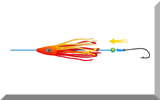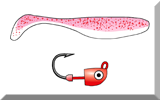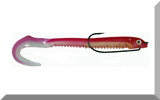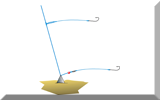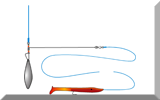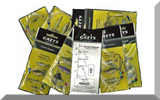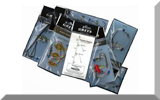Rigs and Techniques for Successful Bottom Fishing
|
The Running Ledger Rig
|
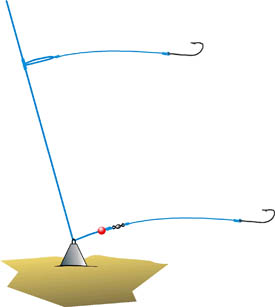 |
Read more about bottom fishing with a running ledger rig...
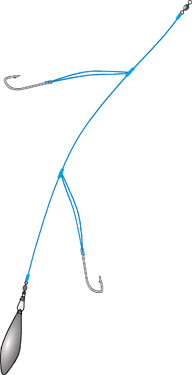 |
The Paternoster or Flapper Rig
|
Read more about bottom fishing with the paternoster rig...
The Flatfish Rig
|
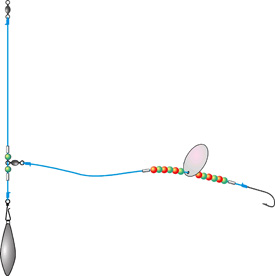 |
Read more about bottom fishing with this specialised flatfish rig...
Fishing with Live Bait
There's one version of bottom fishing that's often overlooked - fishing with a small live fish bait.
Fishing with live bait is seen by some people as being unnecessarily cruel, but there's no doubt that it's a very effective way of catching predatory fish. The concern is that the live baitfish suffers twice - once as a result of being impaled on a hook, and again in being unable to attempt escape when a predator is around. The debate continues, but the decision is yours to make.
The Atlantic Cod is a bottom feeding fish much sought after by UK anglers. Lugworm and crabs feature strongly in its diet - and so do small fish. Pout whiting (or pouting) frequent the same type of ground as cod, and hence this is one of the small fish that often finds itself on the wrong side of the food chain - from the pouting's viewpoint anyway. Consequently, if you catch a small pouting and aren't adverse to livebaiting you should try it as livebait for cod, using the pennel rig to attach it.
But there is another way...
Using their normal cod terminal rig, some anglers attach to the hook another smaller hook on a very short trace - not more than an inch (25mm) or so. They bait this with a small piece of bait - fish strip or worm - leaving the main hook bare.
The idea is that a pouting is caught on the small hook, and in its struggle to get free, attracts the attention of a cod. Said cod swallows the unfortunate pouting, engulfing as he does so the main hook.
A good plan, but there's a flaw...
In practice, not having read the rules, a dogfish or a codling gets the small bait and the angler, believing he's got a pouting about to do its job, leaves well alone.
Result? A long wait and no cod.
The same technique works equally well (or equally doesn't, for the same reason) when livebaiting for conger eels.
Next:~ How to tie the Best Bottom Fishing Rigs...
